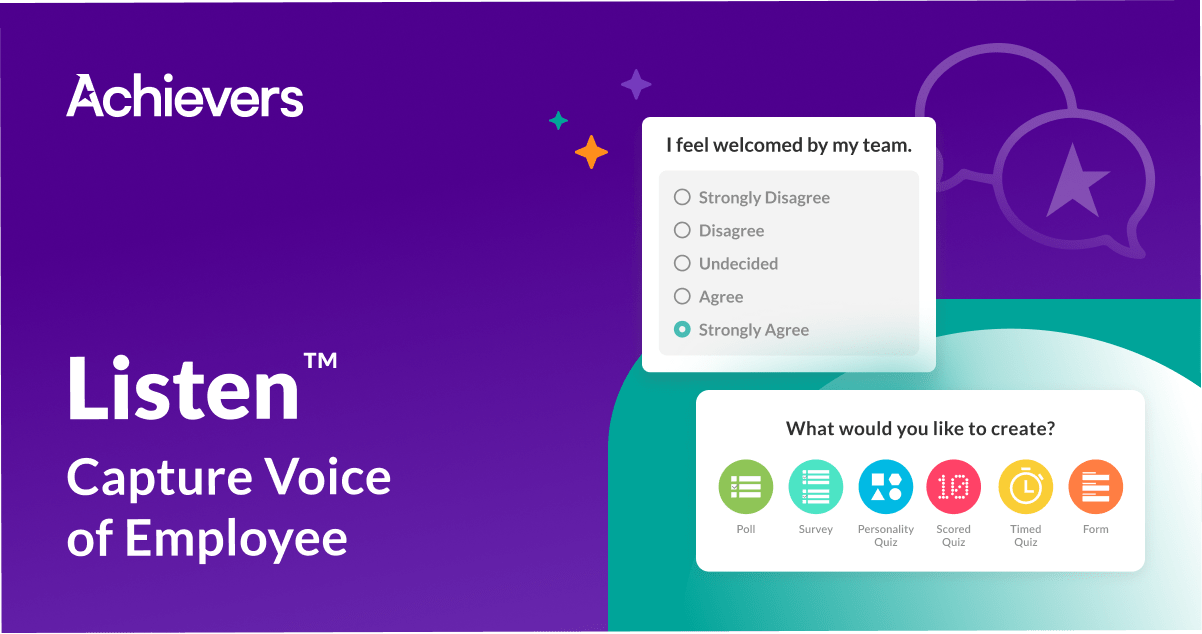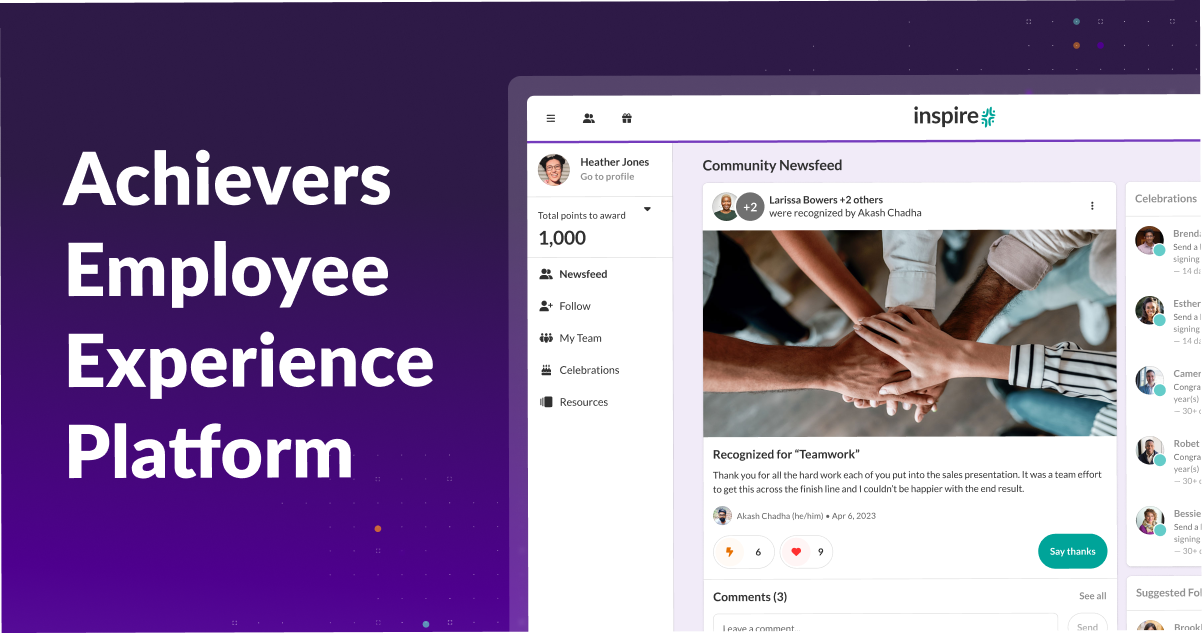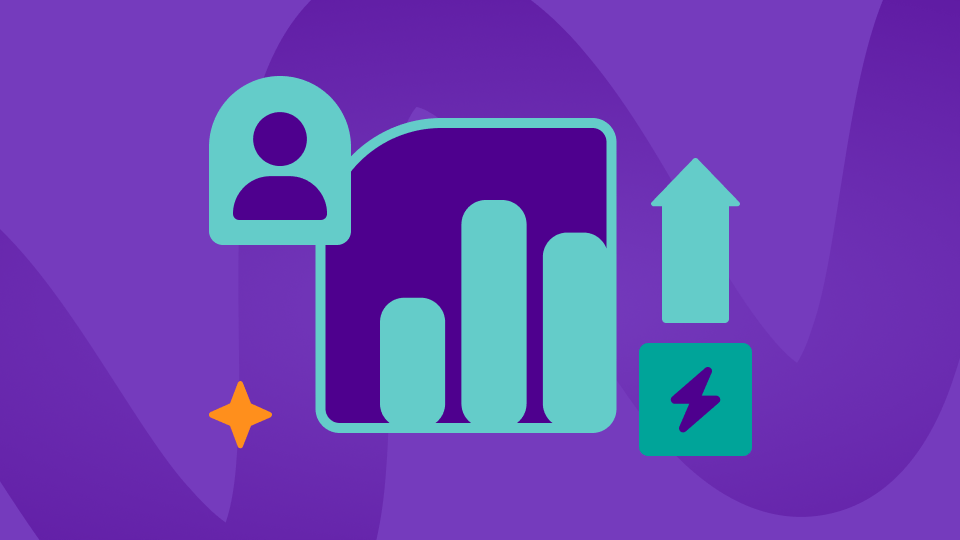Create a culture that means business™
Email address
Arguably the most important factor to business success is its people. Employees are the embodiment of an organization’s purpose, vision, and objectives. That’s why it’s so crucial that every employee is clear on the role they play in the bigger picture. But more than just the role they play, it’s equally important they feel supported, recognized, and valued throughout their entire employee journey.
So how do you ensure a vast, diverse workforce is marching to the same values and goals? Here’s where employee performance management enters in – a crucial aspect of improving business performance.
Key takeaways
- Employee performance management is a process of setting and tracking employee goals, evaluating performance, and recognizing contributions made.
- Aligning employee performance with organizational goals engages and motivates employees, driving overall business performance.
- Employee performance management emphasizes regular, frequent touch points prioritizing an iterative approach to improvement and development.
- Modern tools like performance management, recognition & rewards, and employee feedback software can help companies easily automate and track the process.
What is employee performance management?
Employee performance management is a tool that organizations use to link employee performance to organizational objectives. It is a systematic process that includes regular goal setting, evaluating past performance, providing feedback, and identifying areas for improvement.
More than just annual reviews, employee performance management is about regular, frequent check-ins with a spirit of transparency, collaboration, and development to further the goals of both the employee and the organization.
Why is Employee Performance Management important?
Employee performance management is important because it is the key process in propelling companies toward achieving their business objectives. The success or failure of an organization depends in large part on the performance of the workforce.
While the stakes are high, less than a third of employees believe that their company’s performance management process helps them improve their performance.
But what exactly is at stake by not having a strong employee performance management process in place? Here are just a few negative consequences:
- Company inefficiency: Without clear expectations and goals, employees lack accountability and may act in ways inconsistent with company goals. Even with good intentions, a lack of alignment can cause unnecessary, redundant, and misaligned work.
- Lack of employee motivation: Employees feel lost when they can’t see how their daily tasks contribute to the bigger company picture. A lack of expectations results in an uncertainty in priorities causing disengagement and low morale.
- Workplace biases: Infrequent and inconsistent evaluations may lead to feelings of resentment and reduced trust in management. These feelings can negatively impact both the performance and the culture in the workplace.
- Unrecognized contributions: The day-to-day contributions employees make quickly go unnoticed if there is no strong performance management process in place. Frequent recognition is a powerful strategy to boost all areas of the business including employee retention, productivity, and engagement.
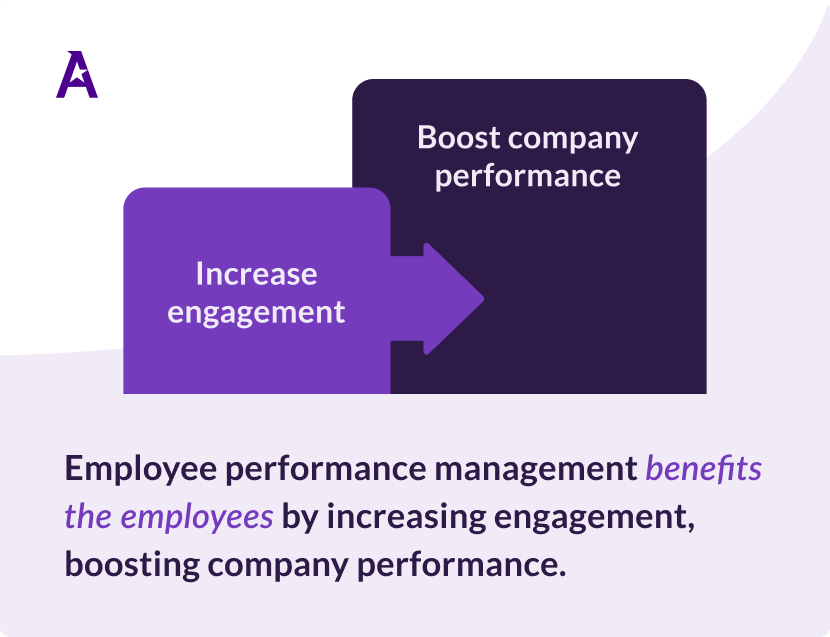
What are the benefits of employee performance management?
The benefits of employee performance management are that it provides accountability and builds trust within the workplace – all while furthering business objectives. Here are more benefits broken down for both the employee and the company.
Benefits for the employee
- Motivation and engagement: Setting goals and expectations that tie to business objectives offers employees a sense of purpose and direction. Goals that are attainable but challenging help the prioritization of work, decision-making, and ultimately drive employees to perform at their highest level.
- Career development: Performance management allows space for creating a roadmap to help achieve career aspirations. By assessing strengths and weaknesses, both the employer and employee can come up with an actionable plan to seek out training and mentorship, ensuring professional growth is a priority.
- Fostering employer-employee relationship: Employees prefer coaching vs. traditional management in today’s workplace. Managers who act as guides and mentors, as opposed to merely giving direction, empower employees to successfully address issues that arise.
Benefits for the company
- Improved organizational performance: Aligning employee performance to organizational vision and strategy helps give everyone a common purpose resulting in increased business outcomes. The accountability to this common purpose ensures that the company operates as efficiently and effectively as possible.
- Reduced turnover: Goal alignment, regular feedback, and frequent recognition all contribute to boosting employee morale and motivation – all leading to higher retention.
- Enhanced talent management: Employee performance management helps identify gaps in talent or resources. Companies can more effectively allocate resources to address these gaps helping them stay competitive in the marketplace.
What are examples of Employee Performance Management?
There is no one-size-fits-all system when it comes to employee performance management. Each company needs to assess its unique context and decide the best strategy and practices for employee success. Here are some examples of employee performance management:
- Goal setting: Setting attainable goals is crucial to a company’s success, but it needs to be more than just an annual activity. Employees and managers must collaboratively work together to set, monitor, and update goals together to drive both employee engagement and help deliver organizational success.
- Coaching: Employees are seeking managers who act as coaches and mentors offering guidance and support versus simply delegating and assigning tasks. Coaching prioritizes two-way communication and the employee’s professional development journey.
- Recognition Programs: A strong recognition program accompanied by rewards is a key factor in motivating and engaging employees helping boost company culture. It reinforces desired behaviors and provides valuable data on employee strengths and potential performance gaps.
- 360-degree feedback: Employees interact with more than just their direct managers. Feedback from not only managers but peers, direct reports, as well as the employees’ own self-reflection offer a more holistic and unbiased view of performance.
What are employee performance management tools?
As organizations look to go beyond traditional approaches to performance management, modern tools are now more readily available to help automate and track the entire process.
Types of employee performance management tools include:
- Goal setting
- Performance appraisals
- Employee feedback
- Personal development plans
- Reward and Recognition
The Achievers Employee Experience Platform helps organizations save time and money in the performance management process through the following science-backed features:
- Recognition: Continually reinforce behaviors consistent with company values with frequent and public recognition via a company-wide social feed.
- Rewards: Go beyond words and show how much you appreciate your employees with a rewards marketplace of over 3M+ options including gift cards, travel destinations, swag, and more.
- Listen (Employee Feedback): Get real-time feedback from your employees – not just at annual reviews – with an always-on chatbot and a digital toolkit of polls, quizzes, surveys, and forms.
- Performance Management Integration: By integrating a high-frequency recognition platform with your performance management software you get valuable employee insights helping you have more meaningful performance reviews.
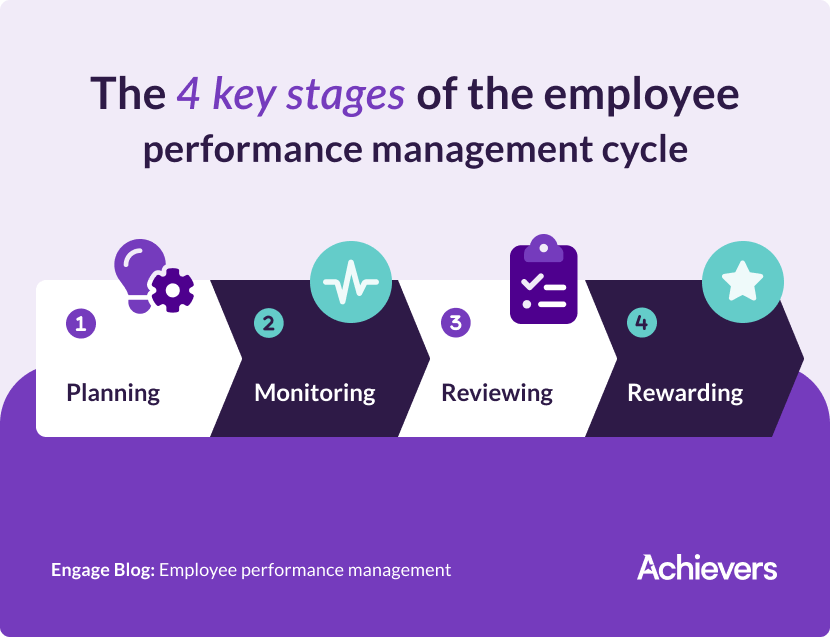
What is the Employee Performance Management cycle?
The employee performance management cycle is a framework organizations use to ensure individual goals are aligned with organizational objectives. There are four stages to this cycle which include planning, monitoring and developing, reviewing and rating, and rewarding and recognition.
This framework is a cycle because it is a continuous and iterative process. This cyclical nature creates a feedback loop promoting continuous improvement and alignment with changing needs.
- Planning: setting goals that are achievable yet challenging
- Monitoring and developing: tracking progress and making adjustments
- Reviewing and rating: evaluating performance against goals set
- Rewarding and recognition: recognizing and rewarding achievements made
What KPIs should I measure for Employee Performance Management?
Every organization has its unique objectives and values. Choosing the right key performance indicators (KPIs) to measure will involve aligning your company objectives with the most appropriate metrics to track.
Here are some common KPIs to help track progress and drive more effective decision-making:
- Employee turnover rate
- Employee productivity
- Employee absenteeism rate
- Employee net promoter score (NPS)
- Number of safety incidents
- Employee peer recognition rates
- Ratio of internal vs. external hires
- # of key hires
- Revenue per full-time employee
Level up your employee performance management with Achievers
A robust employee performance management strategy is vital for business success. While it can take many forms, a key aspect of any effective employee performance management is its recognition and rewards program.
The Achievers Employee Experience Platform (AEXP) allows you to recognize, reward, collect feedback, and integrate with your performance management software, simplifying your performance management process. As the highest active usage platform in the industry, the AEXP is a source of data-rich insights helping you better identify top talent, resource gaps, and growth opportunities.

